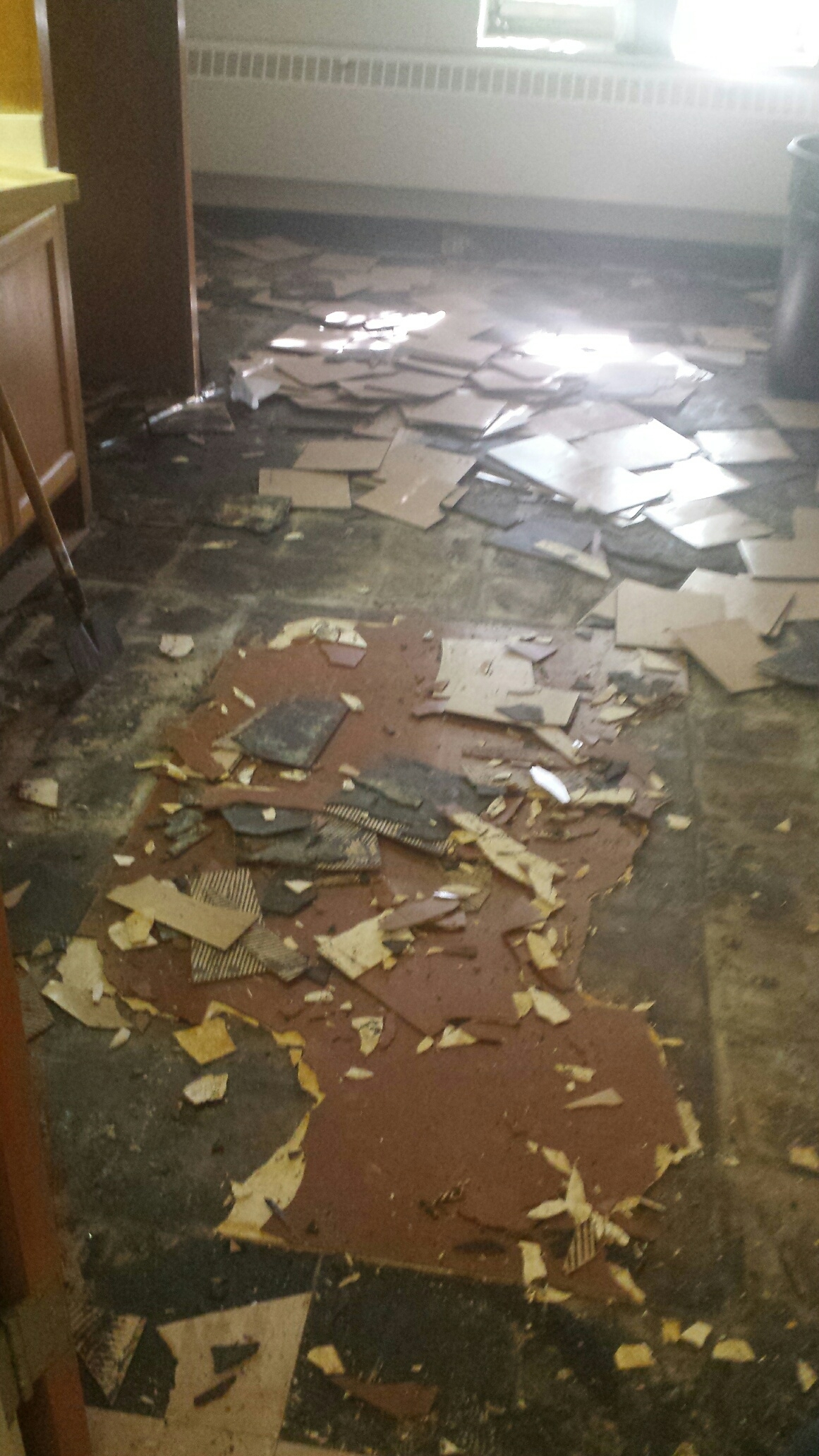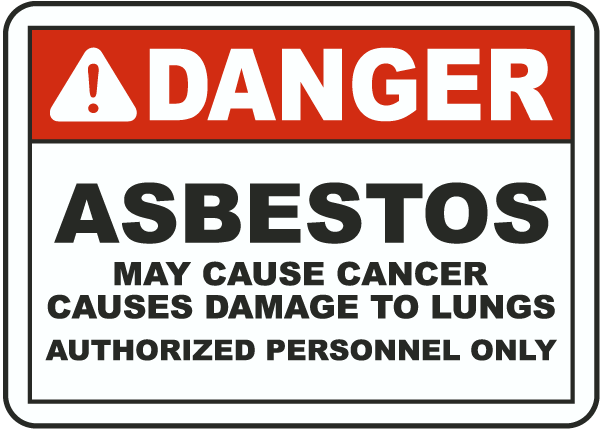Classes of Asbestos Work
The Virginia Department of Labor and Industry (VDOLI) and the Occupational Safety and Health Administration (OSHA) use a four-class system for ACM. For more information, refer to VDOLI's Asbestos Fact Sheet.
If there are no "asbestos-containing materials" in the building or the suspect building materials to be disturbed during the renovation or demolition activities, the work is not regulated and there are no special OSHA/VOSH asbestos requirements; however, you must properly notify authorities for demolition projects in accordance with NESHAP requirements.
Activities involving the removal of thermal surfacing insulation (TSI) and surfacing ACM or PACM. Class I requirements in accordance with 29 CFR 1926.1101 include:
- Work must be performed by a licensed asbestos abatement contractor.
- Project notification is required if the project is greater than or equal to 10 linear or square feet.
- An Asbestos Competent Person is required.
- Asbestos workers are required.
- The worksite must be regulated (i.e. access restricted).
- Personal air monitoring or a Negative Exposure Assessment (NEA) is required.
- Wet methods.
- Decontamination unit.
- *Respiratory protection.
- **Medical surveillance.
- ***Personal protective equipment.
- Waste disposal (sealed, impermeable bags/containers).
- Engineering controls for partial interior demolition and pre-building demolotion interior removals (isolation/containment per 29 CFR 1926.1101(g)(4) and (5)).
- Engineering controls for demolition of the building where ACM remains (see 29 CFR 1926.1101(g)(6)).
- NESHAP requirements apply.
Activities involving the removal of ACM which is not TSI or surfacing material. This includes, but is not limited to, the removal of asbestos-containing wallboard, floor tile and sheeting, roofing and siding shingles, and construction mastics.
- Work must be performed by a licensed asbestos abatement contractor, if friable.
- Project notification is required if the project is is friable and greater than or equal to 10 linear or square feet.
- An Asbestos Competent Person is required.
- Asbestos workers are required.
- Worksite must be regulated (i.e. access restricted).
- Personal air monitoring or a Negative Exposure Assessment (NEA) is required.
- Wet methods
- Decontamination unit (drop cloth and HEPA vacuum) if no NEA.
- *Respiratory protection.
- **Medical surveillance.
- ***Personal protective equipment.
- Waste disposal (sealed, impermeable bags/containers).
- Engineering controls for partial interior demolition and pre-building demolotion interior removals (isolation/containment per 29 CFR 1926.1101(g)(7) and (8)(i)-(v)).
- Engineering controls for demolition of building where ACM remains (see 29 CFR 1926.1101(g)(8) (vi)).
- NESHAP requirements apply.

- Work must be performed by a licensed asbestos abatement contractor, if friable.
- Project notification is required if the project is is friable and greater than or equal to 10 linear or square feet.
- An Asbestos Competent Person is required.
- Asbestos workers are required on friable projects. Workers must be 8 our initially trained and anual refresher training on non-friable projects.
- Work site must be regulated (i.e. access restricted).
- Personal air monitoring or a Negative Exposure Assessment (NEA) is required.
- Wet methods.
- Decontamination unit (drop cloth and HEPA vacuum) if no NEA.
- *Respiratory protection.
- **Medical surveillance.
- ***Personal protective equipment.
- Waste disposal (sealed, impermeable bags/containers).
- Engineering controls for partial interior demolition and pre-building demolotion interior removals (isolation/containment per 29 CFR 1926.1101(g)(7) and (8)(i)-(v)).
- Engineering controls for demolition of building where ACM remains (see 29 CFR 1926.1101(g)(8) (vi)).
- NESHAP requirements apply.
Activities involving the repair and maintenance operations where asbestos-containing material, including TSI and surfacing asbestos-containing material and presumed asbestos-containing material, is likely to be disturbed. Disturbance means activities that disrupt the matrix of, crumbles or pulverizes, or generates visible debris from asbestos-containing material or presumed asbestos-containing material.
Activities involving maintenance and custodial activities during which employees may contact but do not disturb asbestos-containing material or presumed asbestos-containing material, and activities to clean up dust, waste, and debris resulting from Class I, II, and III activities. In accordance with 29 CFR 1926.1101(g)(10), employees performing Class IV work must be trained.
*Respirators are mandatory if:
- Non-intact removal, or
- No NEA, or
- Exposure greater than the OSHA PEL, or
- Dry removal (except for intact roofing where NEA obtained), or
- In emergencies.
**Medical surveillance is mandatory if:
- Wearing a negative pressure respiratory, or
- Exposed to greater than the OSHA PEL for more than 30 days of work per year, or
- Class I, II, or III work for 30 days or more per year.
***PPE is mandatory:
- Class I work greater than 25 feet or 10 square feet, or
- Less than 25 feet or 10 square feet and no NEA, or
- Exposure is greater than the OSHA PEL.
Warning Signs - Regulated Areas
In accordance with 29 CFR 1910.1001(j)(4), warning signs shall be provided and displayed at each regulated area and at all approaches to regulated areas so that personnel may read the signs and take necessary protective steps before entering the area. After June 1, 2016, signs shall bear the following:
In addition to the verbiage above, where the use of respirators and protective clothing is required in a regulated area, the warning signs shall include: WEAR RESPIRATORY PROTECTION AND PROTECTIVE CLOTHING IN THIS AREA.
Signs may include the use of foreign languages, pictographs, and graphics to ensure personnel comprehension.
Signs shall be provided and displayed that meet OSHA requirements. As of June 1, 2016, signage should read: Danger. Asbestos may cause cancer. Causes damage to lungs. Authorized Personnel only.

Contact Information
Robin McCall-Miller, Occupational Safety Program Manager
Phone: 540-231-2341
Email: rmmiller@vt.edu


